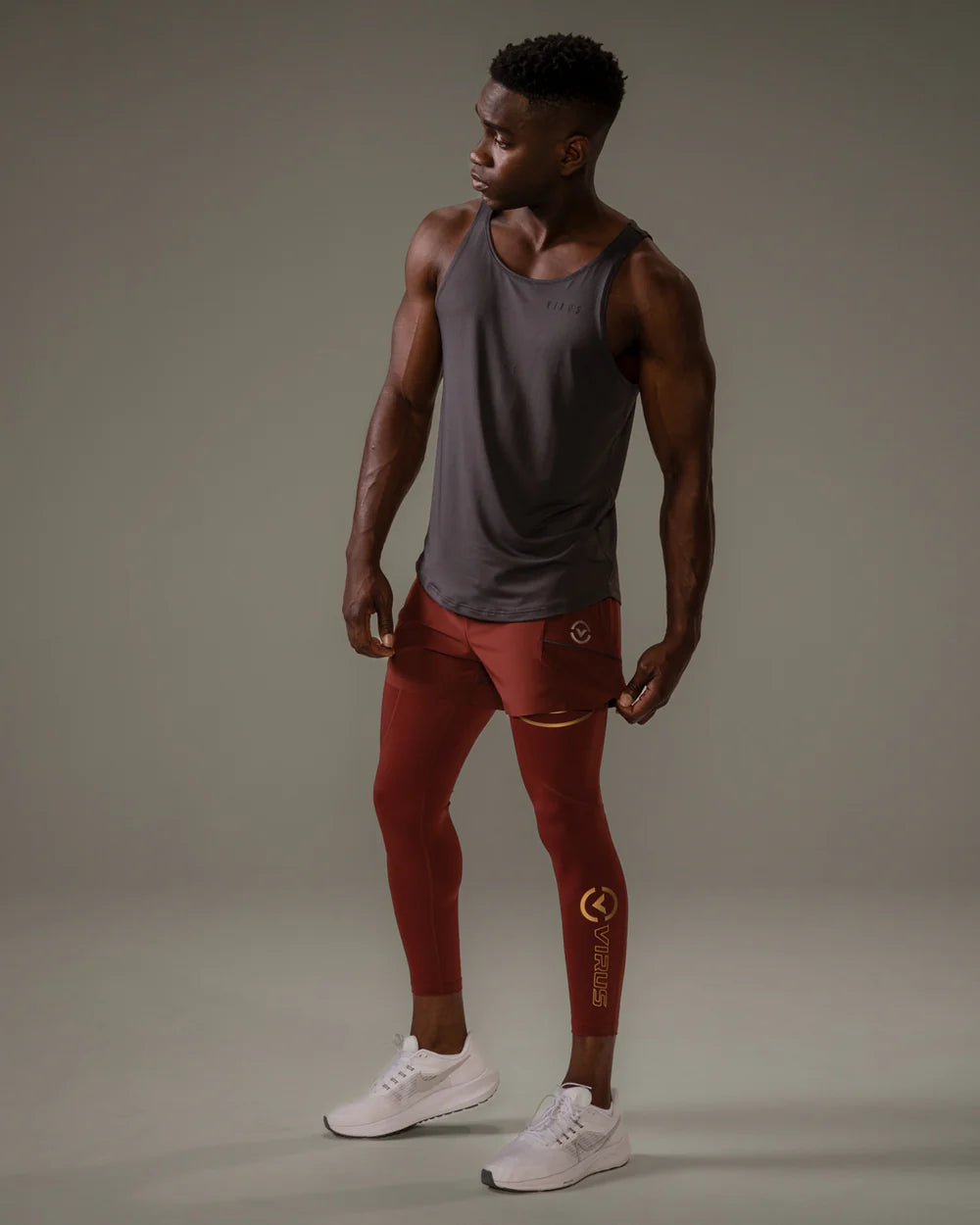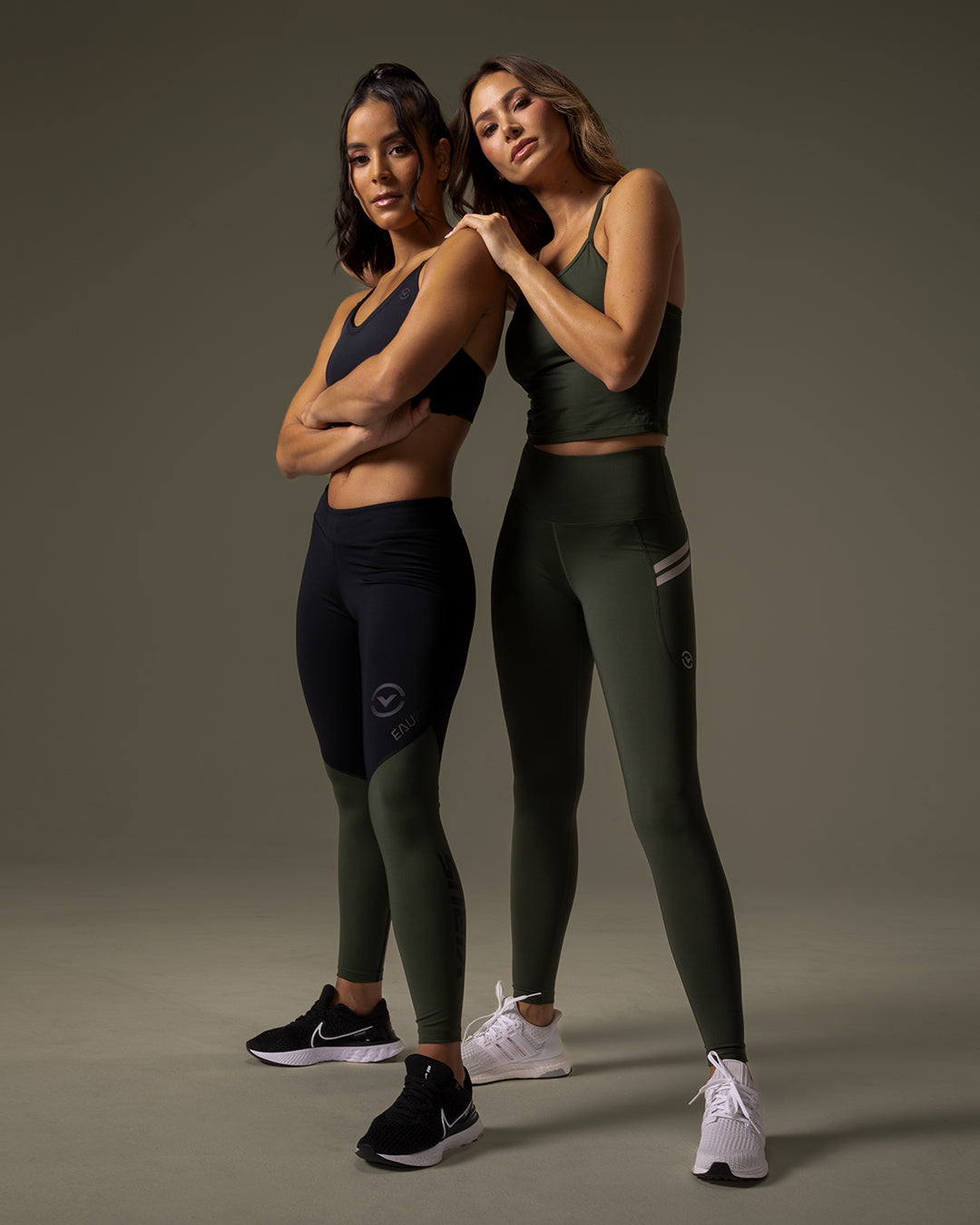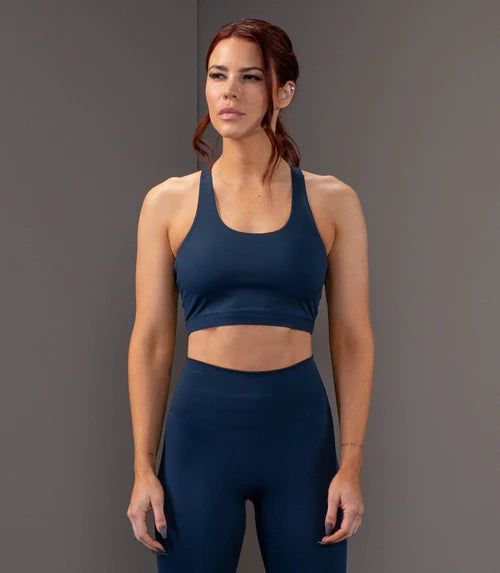Have you ever wondered, "What is the point of compression clothing?"
Well, if you're someone who is passionate about fitness and physical activities, then this question might have crossed your mind. Compression clothing has gained popularity in recent years, and for good reason.
These specially designed garments have become an essential part of many athletes' and fitness enthusiasts' wardrobes. But what exactly is the point of compression clothing? And why should you consider incorporating it into your workouts and physical activities?
In this article, we will explore the importance of compression clothing and how it can benefit your performance and overall well-being. So, let's dive in and discover why compression clothing is more than just a trendy piece of workout gear.
The Benefits of Compression Clothing in Enhancing Performance
When it comes to working out or engaging in physical activities, we are constantly in search of ways to improve our performance. One effective tool that can aid in achieving optimal performance is compression clothing.
Compression clothing has gained popularity among athletes, fitness enthusiasts, and even everyday individuals due to its numerous benefits in enhancing performance during workouts and physical activities.
Increased Muscle Support
One of the key benefits of compression clothing is its ability to provide increased muscle support. The tight, yet flexible, nature of compression garments helps to stabilize and align muscles, reducing muscle oscillation and fatigue.
This support not only enhances performance but also minimizes the risk of injuries. By reducing muscle vibrations, compression clothing can help athletes maintain proper form and technique, resulting in more efficient movements.
Improved Blood Circulation
Compression clothing exerts uniform pressure on the body, aiding in the improvement of blood circulation.
By applying pressure to the muscles, compression garments assist in facilitating the flow of oxygenated blood to the working muscles.
This increased blood flow means that muscles receive a constant supply of oxygen, nutrients, and energy. Improved circulation also assists in the removal of waste products, such as lactic acid, from the muscles.
As a result, athletes may experience reduced muscle soreness and fatigue, allowing them to train harder and recover faster.
Enhanced Performance and Endurance
The benefits of compression clothing extend beyond muscle support and improved blood circulation. Studies have shown that wearing compression garments can lead to enhanced performance and endurance.
The compression provided by these garments can help reduce the perception of fatigue, allowing athletes to push through intense workouts or physical activities for longer periods.
Additionally, compression clothing has been found to improve jump height, power output, and running economy. This can be attributed to the enhanced muscle alignment and stability provided by the garments.
Quicker Recovery
Recovery is a crucial component of any fitness routine, and compression clothing can significantly aid in the post-workout recovery process. The compression helps to reduce swelling and inflammation, promoting faster muscle repair and reducing muscle soreness.
Additionally, compression garments facilitate the removal of metabolic waste products, such as lactic acid, which can accumulate during intense workouts. By supporting the muscles and enhancing blood circulation, compression clothing assists in the delivery of nutrients to the muscles, promoting faster recovery and reducing downtime between workouts.
Temperature Regulation
During intense workouts or physical activities, our bodies generate heat. Compression clothing can help regulate body temperature by wicking away sweat and facilitating evaporation. The moisture-wicking properties of compression garments keep the body dry, preventing overheating and discomfort during exercise.
By maintaining a comfortable body temperature, athletes can perform at their best without the distraction of excessive sweating or overheating. In conclusion, compression clothing offers a range of benefits when it comes to enhancing performance during workouts and physical activities.
From increased muscle support to improved blood circulation and quicker recovery, these garments can make a significant difference in overall performance and well-being. If you're looking to take your fitness journey to the next level, consider incorporating compression clothing into your workout wardrobe.
The Science Behind Compression Clothing: Why Does it Work?
Compression clothing has become increasingly popular among athletes and fitness enthusiasts, and for good reason. These tight-fitting garments, typically made from spandex or other stretchable materials,
are designed to provide targeted pressure on specific muscle groups. But what is the science behind compression clothing and why does it actually work?
To understand the benefits of compression clothing, let's take a closer look at what happens to our bodies during workouts.
When we exercise, our muscles contract, causing the blood vessels in those areas to constrict. This can reduce blood flow and oxygen delivery to the muscles, which can lead to fatigue and decreased performance.
Compression clothing works by applying graduated pressure to the muscles, helping to improve circulation and blood flow.
This enhanced blood flow not only delivers more oxygen and nutrients to the muscles but also helps to remove waste products such as lactic acid, which can contribute to muscle soreness and fatigue.
By improving circulation and reducing muscle vibration, compression clothing can enhance muscle performance and delay the onset of fatigue.
Here are some key scientific reasons why compression clothing is effective:
1. Increased Blood Flow:
The compression applied by these garments helps to improve venous return, which is the flow of blood back to the heart.
By promoting blood flow, compression clothing ensures that fresh, oxygen-rich blood is continuously delivered to the working muscles, enhancing their performance.
2. Reduced Muscle Oscillation:
During high-impact activities such as running or jumping, our muscles experience vibrations.
Compression clothing helps to minimize these vibrations, reducing muscle oscillation. This stability can lead to improved muscle efficiency, allowing athletes to generate more power and perform at their best.
3. Decreased Muscle Soreness:
After an intense workout, our muscles can feel sore and fatigued.
Compression clothing can help reduce post-exercise muscle soreness by minimizing the buildup of lactic acid and other metabolic byproducts, while facilitating the removal of waste products from the muscles.
4. Enhanced Recovery:
Recovery is a crucial aspect of any fitness routine. Compression clothing promotes faster recovery by aiding in the removal of metabolic waste products, reducing inflammation,
and facilitating the repair and rebuilding of muscle fibers. This can help athletes recover more quickly between training sessions and prevent injury.
5. Improved proprioception:
Proprioception refers to our body's ability to sense its position and movement in space.
Compression clothing provides a gentle and consistent pressure that can enhance proprioception, leading to better body awareness and coordination during physical activities.
It is important to note that compression clothing may not work the same for everyone. Each individual has unique physiological responses, and personal preferences should be taken into account when selecting compression garments. Additionally, it's essential to choose the right size and fit to ensure optimal benefits.
In conclusion, the science behind compression clothing lies in its ability to improve blood circulation, reduce muscle vibration, decrease muscle soreness, enhance recovery, and improve proprioception.
By understanding the science behind these garments, athletes and fitness enthusiasts can make informed decisions when incorporating compression clothing into their workouts and physical activities.
Go shopping
Choosing the Right Compression Clothing: Enhancing Comfort and Support
When it comes to choosing the right compression clothing for your workouts and physical activities, there are a few key factors to consider.
Not all compression garments are created equal, and finding the ones that best suit your needs can greatly enhance your comfort and support during exercise.
1. Size and Fit:
One of the most important considerations when selecting compression clothing is finding the right size and fit. Compression garments should fit snugly against your body, providing a comfortable level of compression without feeling too tight or restrictive.
Keep in mind that different brands may have slightly different sizing charts, so it's essential to refer to the specific measurements provided by the manufacturer.
2. Fabric:
Another crucial aspect to consider is the fabric used in the compression clothing. Look for garments made from breathable, moisture-wicking materials such as spandex or nylon blends.
These fabrics help to keep you cool and dry by wicking away sweat from your body. Additionally, the fabric should be durable and able to withstand frequent washes without losing its compression properties.
To provide a simple explanation of the differences between synthetic fabrics commonly used in compression clothing, take a look at the table below:
| Fabric | Features | Benefits |
|---|---|---|
| Spandex | High elasticity, excellent recovery | Superior flexibility and support |
| Nylon | Lightweight, moisture-wicking | Keeps you cool and dry during workouts |
| Polyester | Quick-drying, abrasion-resistant | Ideal for intense and high-impact activities |
3. Compression Level:
Compression clothing comes in different compression levels, usually measured in millimeters of mercury (mmHg). The compression level determines the amount of pressure applied to your muscles.
Lower compression levels provide a mild to moderate level of support, while higher levels offer firmer compression.
The choice of compression level depends on personal preference and the type of activity you'll be engaging in. For recovery purposes, higher compression levels are often recommended.
4. Design and Features:
Lastly, consider the design and additional features of the compression clothing. Look for garments with flatlock seams to prevent chafing and irritation during movement.
Some compression clothing also incorporates targeted compression zones to support specific muscles and joints. Additionally, features like reflective elements can enhance visibility during outdoor workouts.
By carefully considering these factors, you can ensure that the compression clothing you choose provides the optimal level of comfort and support for your workouts and physical activities.
Remember, compression clothing should feel snug but not constrictive, and it should help enhance your performance while protecting your muscles and improving your recovery.
The Role of Compression Clothing in Post-Workout Recovery and Injury Prevention
After an intense workout or physical activity, it's crucial to give your body the care and support it needs to recover effectively. This is where compression clothing plays a significant role.
Compression garments, such as compression socks, leggings, or sleeves, can greatly aid in post-workout recovery and help prevent injuries. Let's dive deeper into why compression clothing is essential for these purposes.
Improved Blood Circulation
One of the key benefits of compression clothing is its ability to enhance blood circulation. During exercise, the muscles work harder, requiring an increased supply of oxygen and nutrients.
Compression garments exert gentle pressure on the muscles, which helps improve blood flow. This enhanced circulation ensures that oxygen and essential nutrients are delivered to the muscles more efficiently, allowing for a faster recovery process.
Muscle Stabilization
Compression clothing also provides support and stability to the muscles, joints, and ligaments during workouts. As you engage in high-impact activities, such as running or weightlifting, your muscles are subjected to stress and strain.
Wearing compression garments helps minimize muscle oscillation, reducing fatigue and the risk of muscle damage. The compression also supports the surrounding ligaments and tendons, reducing the chance of sprains or strains.
Reduced Muscle Soreness
Post-workout muscle soreness, also known as delayed onset muscle soreness (DOMS), is a common occurrence. It typically peaks within 24 to 48 hours after intense exercise, leaving you with discomfort and limited mobility.
Compression clothing can help alleviate muscle soreness by promoting faster waste product removal, reducing inflammation, and providing gentle compression that reduces muscle vibration.
By wearing compression garments during recovery, you can minimize the intensity and duration of DOMS, allowing for a quicker return to your regular workout routine.
Injury Prevention
Preventing injuries is paramount for any fitness enthusiast. Compression clothing can act as a preventative measure by providing support and stability to vulnerable areas of the body.
For example, if you have a history of knee injuries or are prone to shin splints, wearing compression sleeves or tights can help reduce the strain on these areas, minimizing the risk of reinjury.
Additionally, compression garments can aid in proper posture alignment during exercise, reducing the chance of overcompensation and subsequent injuries.
Improved Recovery Time
When you push your body to its limits during workouts, proper recovery becomes essential. Compression clothing aids in speeding up the recovery process, allowing you to bounce back more quickly.
By supporting blood circulation, reducing muscle soreness, and providing stability, compression garments promote efficient healing and rejuvenation of tired muscles.
This means you can get back to your training routine sooner, without compromising your body's overall well-being. In conclusion, the role of compression clothing in post-workout recovery and injury prevention cannot be underestimated.
From improving blood circulation and muscle stabilization to reducing muscle soreness and enhancing recovery time, compression garments offer an array of benefits.
By incorporating compression clothing into your workout routine, you can take proactive steps to support your body's recovery and promote overall fitness and well-being.
Compression Clothing: Boosting Blood Flow and Oxygenation
When it comes to the benefits of compression clothing for workouts and physical activities, one important aspect that should not be overlooked is its ability to boost blood flow and oxygenation.
This is a key factor in enhancing performance, reducing fatigue, and speeding up recovery. During exercise, especially high-intensity workouts or endurance training,
the muscles require an increased supply of oxygen and nutrients. Compression clothing, with its tight-fitting design, helps to improve blood circulation in the body.
The compression applied to the muscles aids in pushing deoxygenated blood back to the heart more efficiently, while at the same time, enhancing the delivery of oxygenated blood to the working muscles.
This increased blood flow not only improves performance by providing essential nutrients to the muscles but also helps remove waste products, such as lactic acid, which can lead to muscle fatigue. Furthermore, compression clothing can significantly increase oxygenation.
The compression fabric puts pressure on the blood vessels, forcing them to dilate. As a result, more oxygen-rich blood can flow through the muscles, providing the energy needed to perform at a higher level.
This increased oxygenation can be particularly beneficial during activities that require bursts of power or sustained endurance, such as sprinting, weightlifting, or long-distance running.
In addition to improving blood flow and oxygenation, compression clothing can also aid in reducing muscle soreness and speeding up recovery.
During intense workouts, tiny micro-tears occur in the muscle fibers, leading to soreness and inflammation.
The compression provided by these garments helps to stabilize the muscles and reduce the vibrations that contribute to tissue damage.
It also helps flush out metabolic waste products, promoting faster recovery and reducing post-exercise muscle soreness.
When choosing compression clothing for optimizing blood flow and oxygenation, it is important to consider the level of compression.
Too little compression may not provide the desired benefits, while excessive compression can be uncomfortable and restrict movement.
It is recommended to select compression garments that offer graduated compression, meaning that the pressure is highest at the extremities and gradually decreases towards the core.
This promotes optimal blood flow and ensures a balance between support and freedom of movement.
Additionally, the choice of fabric is also crucial. Look for compression clothing made from breathable and moisture-wicking materials that can help regulate body temperature and keep you comfortable during intense workouts.
Flatlock seams and ergonomic designs further enhance the overall comfort and prevent chafing or irritation. In conclusion, compression clothing plays a significant role in boosting blood flow and oxygenation during workouts and physical activities.
By enhancing circulation, it improves the delivery of oxygen and nutrients to the muscles, while simultaneously aiding in the removal of waste products. This results in improved performance, reduced muscle fatigue, and faster recovery.
By carefully selecting the right compression level and fabric, you can maximize the benefits of compression clothing and enhance your overall exercise experience.
see What is the point of compression clothing?
Conclusion on What is the point of compression clothing?
In conclusion, compression clothing has become an integral part of workout attire for fitness enthusiasts and athletes alike.
The benefits of wearing compression garments during workouts and physical activities are numerous and go beyond just improving performance and appearance.
By applying pressure to the muscles, compression clothing helps to reduce muscle vibration, which in turn decreases muscle fatigue and soreness.
This increased stability and support provided by compression garments can lead to improved biomechanics and enhanced overall performance.
Moreover, the science behind compression clothing demonstrates its ability to enhance blood flow and oxygenation to the muscles.
This not only aids in the delivery of essential nutrients but also helps to remove waste products, reducing the risk of muscle cramps and improving endurance. Choosing the right compression clothing is crucial for maximizing its benefits.
The right fit, fabric, and level of compression can significantly impact comfort and support. It is important to consider the specific activity, body type, and personal preferences when selecting compression garments.
Furthermore, compression clothing plays a vital role in post-workout recovery and injury prevention. By promoting efficient circulation, it helps to flush out metabolic waste, reduce inflammation, and accelerate the recovery process.
Additionally, the compression provided by these garments can provide extra support to vulnerable areas, preventing injuries such as sprains and strains. So, what is the point of compression clothing for workouts and physical activities?
It is clear that compression clothing is more than just a fashion trend. Its ability to enhance performance, improve blood flow and oxygenation, boost recovery, and provide added support makes it an essential tool for individuals who are serious about their fitness journey.
As you embark on your fitness endeavors, consider adding compression clothing to your workout wardrobe. Experience the benefits for yourself and take your workouts and physical activities to new heights.
Trust the science, choose the right compression clothing, and embrace the power of compression in optimizing your performance and overall well-being.
Remember, the journey to a healthier and fitter lifestyle is not solely about the workouts you do; it's also about the tools and strategies you employ along the way.
Compression clothing is one such tool that can make a significant difference in your fitness journey. Embrace the power of compression, and enjoy the numerous benefits it brings to your workouts and physical activities.
FAQs for What is the point of compression clothing?
1. Are compression clothing only beneficial for professional athletes or can regular individuals also use them?
Compression clothing is not limited to professional athletes. Regular individuals can also benefit from wearing compression gear during workouts or physical activities.
The compression fabric helps to improve blood circulation, reduce muscle fatigue, and enhance overall performance.
Whether you are a seasoned athlete or just starting your fitness journey, compression clothing can provide valuable support and comfort.
2. Can compression clothing help in preventing injuries?
Yes, compression clothing can play a role in injury prevention. By providing targeted support to muscles and joints, compression gear can help reduce the risk of strains, sprains, and other common injuries.
The compression fabric also aids in stabilizing muscles and limiting excessive movement, which can be particularly beneficial during high-intensity workouts or activities that involve repetitive motions.
However, it's important to note that compression clothing alone cannot guarantee complete injury prevention. Proper warm-up, cool-down, and practicing correct form are equally important.
3. Should I wear compression clothing during post-workout recovery?
Absolutely! Compression clothing is highly recommended during post-workout recovery. After an intense workout, wearing compression gear can help increase blood flow to tired muscles, aiding in the removal of lactic acid and other metabolic byproducts. This promotes faster muscle recovery and reduces muscle soreness.
Additionally, compression clothing provides gentle compression and support to the muscles, which can help prevent swelling and encourage proper alignment during the recovery phase. Remember to consult with a healthcare professional if you have any underlying medical conditions or concerns regarding the use of compression clothing.







Leave a comment
This site is protected by hCaptcha and the hCaptcha Privacy Policy and Terms of Service apply.